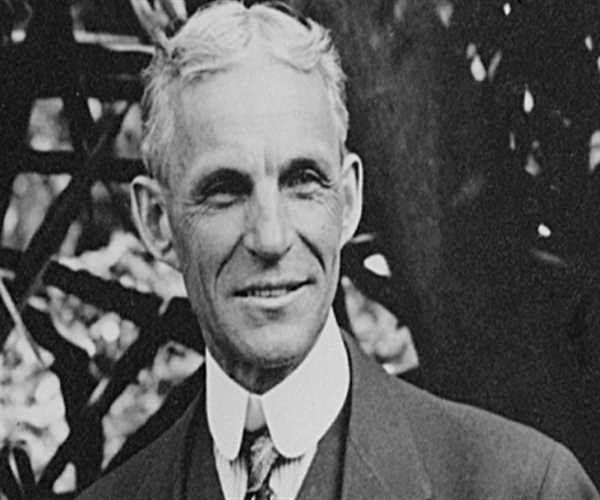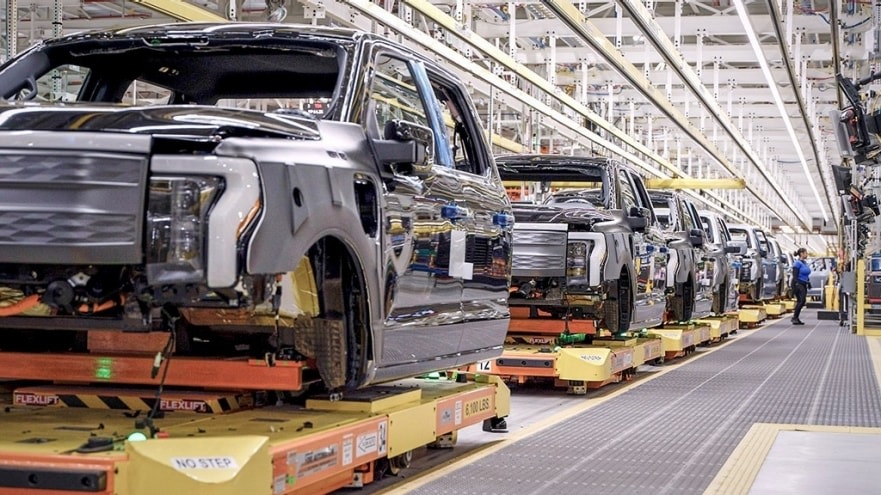Search here

11-Jul-2023 , Updated on 7/11/2023 4:32:57 AM
Explore the vision of Henry Ford
Highlights
- Henry Ford was an American industrialist and founder of the Ford Motor Company.
- His vision was to make automobiles affordable and accessible to the masses.
- Ford's most significant innovation was the development of the assembly line, which revolutionized mass production.
- The assembly line allowed for the efficient and rapid production of automobiles, reducing costs and making cars more affordable for the average consumer.
- Ford's Model T, introduced in 1908, became a symbol of innovation and success, and it was the first car produced on a large scale.
- Ford implemented the concept of interchangeable parts, making it easier and more efficient to repair and replace components.
- He also introduced the concept of a minimum wage for workers, which helped improve living standards and increased employee loyalty.
Henry Ford, the renowned American industrialist, entrepreneur, and founder of the Ford Motor Company, was a visionary leader who revolutionized the automobile industry and left an indelible mark on the world. His relentless pursuit of innovation and commitment to mass production transformed the way people live and work, making him one of the most influential figures in the history of industrialization. This view explores Henry Ford's vision and his innovative contributions that shaped the world as we know it today.
Henry Ford's vision was rooted in his belief that every person should have access to affordable transportation. He envisioned a world where automobiles would be within the reach of ordinary people, thereby transforming the way they travel and enabling greater mobility and freedom. Ford's vision was not limited to creating automobiles but extended to developing an efficient and affordable manufacturing process that would make his vision a reality.
One of Ford's most significant contributions was the development of the assembly line manufacturing system. Ford recognized that the traditional method of building cars, which involved skilled craftsmen individually crafting each component, was slow and costly. He aimed to streamline the production process by breaking it down into simple, repetitive tasks that could be performed by less skilled workers. This approach drastically reduced the time and cost required to build a car, making it more affordable for the masses.
In 1913, Ford introduced the first moving assembly line at his Highland Park plant in Michigan. This groundbreaking innovation revolutionized manufacturing not only in the automotive industry but also across various sectors worldwide. The assembly line allowed for a continuous flow of production, with each worker specializing in a specific task. Components and materials were brought to the workers on a conveyor belt, and they would perform their designated task before passing it along to the next worker. This efficient system increased productivity and reduced the time required to assemble a car from over 12 hours to just 93 minutes.
By implementing the assembly line, Ford was able to achieve unprecedented economies of scale. As production efficiency increased, the cost of manufacturing decreased, enabling Ford to lower the price of his vehicles. In 1908, Ford introduced the Model T, a simple and durable car that was affordable for the average American. Through continuous refinements in the assembly line process and economies of scale, Ford was able to reduce the price of the Model T from $825 in 1908 to just $260 by 1924. This dramatic reduction in price made the automobile accessible to the middle class, transforming it from a luxury item to a necessity.
Another significant innovation by Henry Ford was his introduction of the concept of interchangeable parts. Prior to Ford's advancements, repairing machines or vehicles often required skilled craftsmen to custom-make individual parts. Ford recognized the potential of standardized, interchangeable parts, which would simplify repairs and reduce costs. By implementing this concept, Ford made it easier for consumers to maintain and repair their vehicles, further enhancing the affordability and practicality of owning an automobile.
In addition to his contributions in manufacturing and production, Henry Ford was also a pioneer in employee welfare. He recognized the importance of a motivated and dedicated workforce and believed that higher wages would lead to increased productivity. In 1914, Ford implemented the groundbreaking $5 per day wage for his factory workers, which was more than double the average industrial wage at the time. This move not only attracted talented workers but also reduced employee turnover and fostered a sense of loyalty and commitment among his workforce. Ford's commitment to fair wages and reasonable working hours set new standards for labor practices in the industry.

Source : KnowESG
Henry Ford's innovative spirit and unwavering determination to make a difference continue to inspire generations of entrepreneurs and inventors. His vision for affordable transportation and efficient manufacturing revolutionized the world, creating a paradigm shift in how goods are produced and consumed. Ford's contributions not only transformed the automobile industry but also had far-reaching implications for society, leading to increased mobility, job creation, and economic growth.
Furthermore, Henry Ford's impact extended beyond the realms of industry and production. He was also a proponent of social change and believed in the power of education. Ford recognized that an educated workforce was essential for the progress of society and the success of his own company
Moreover, Henry Ford's innovative spirit extended to his personal life as well. He was an avid inventor and held numerous patents for various inventions. One of his notable inventions was the Fordson tractor, which revolutionized farming practices and helped increase agricultural productivity. The tractor was affordable, efficient, and accessible to farmers, enabling them to cultivate larger areas of land and improve their yields. Ford's dedication to improving farming methods showcased his desire to bring innovation to all aspects of life.
In conclusion, Henry Ford's vision and innovative contributions have left an indelible mark on the world. Through his pioneering efforts in manufacturing, he revolutionized the production process and made automobiles affordable and accessible to the masses. His implementation of the assembly line and interchangeable parts set new standards for efficiency and productivity. Ford's commitment to employee welfare and fair wages set a precedent for labor practices. His legacy as an innovator and visionary continues to shape industries and inspire future generations to think beyond the boundaries of what is possible.

SEO and Content Writer
I am Drishan vig. I used to write blogs, articles, and stories in a way that entices the audience. I assure you that consistency, style, and tone must be met while writing the content. Working with the clients like bfc, varthana, ITC hotels, indusind, mumpa, mollydolly etc. has made me realized that writing content is not enough but doing seo is the first thing for it.
Join Our Newsletter
Subscribe to our newsletter to receive emails about new views posts, releases and updates.
Copyright 2010 - 2025 MindStick Software Pvt. Ltd. All Rights Reserved Privacy Policy | Terms & Conditions | Cookie Policy